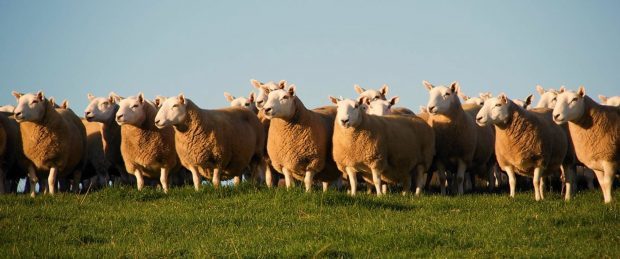The accepted wisdom is that New Zealand is miles ahead of Scotland when it comes to making profit from grassland but that may not be entirely correct.
Speaking at a packed-out meeting in Perth, Trevor Cook, a North Island vet, farmer and grassland guru, observed that over the last three years he had seen a greater rate of change in Scotland than he had in his home country. Over the last 36 months he has been involved with Quality Meat Scotland’s (QMS) Better Grazing = Better Business programme.
“Farmers here and in New Zealand have failed abysmally at increasing the value of their products, so that leaves them looking hard at their level and cost of production,” he said.
QMS chairman Jim McLaren had already warned that big changes were coming in terms of Brexit and trade – none of which were in producers’ control. Production costs however were controllable within an individual business and efficient grassland utilisation was a key component, he said.
Mr Cook went further suggesting controversially that 90% of beef and lamb production was the outcome of management and only 10% was the outcome of genetics. Growth potential was determined by genetics but it was health status and nutrition that allowed that potential to be expressed. Animal health status in Scotland was admittedly high but there was work to be done on pasture utilisation.
Farmers had to look not only at the yield of grass but how well it was utilised. The practical maximum utilisation was about 85% allowing for trampling and other wastage. This could only be achieved, in Mr Cook’s view, by rotational or paddock grazing.
It had allowed grass species to grow to their maximum with only judicious applications of nitrogen fertiliser to fill in the gaps during the season.
Fellow New Zealander Andre van Barneveld gave the golden rules for rotational paddock management. Firstly grass had to be leafy and vegetative to aid digestibility and maximise intakes. Secondly producers had to manage the pre-grazing window by measuring the grass available using a measuring stick or plate meter. If there was too much grass then one or two paddocks might need to be conserved as silage.
At times stock could be moved forward as often as every 24 hours. Attention had to be paid to the residual grass left after grazing to make sure that the plants had not been depleted to the extent that they would not recover quickly. Monitoring was everything and if it was done properly production could be very high with the only capital expense being some electric fence reels and enough water troughs to serve every paddock.
The Perth meeting marked the end of the three-year Better Grazing = Better Farming programme but, according to QMS, plans are afoot for another programme to take the concept forward.










